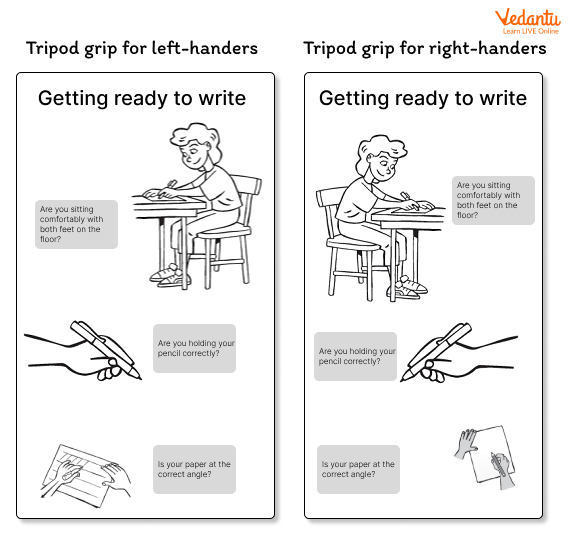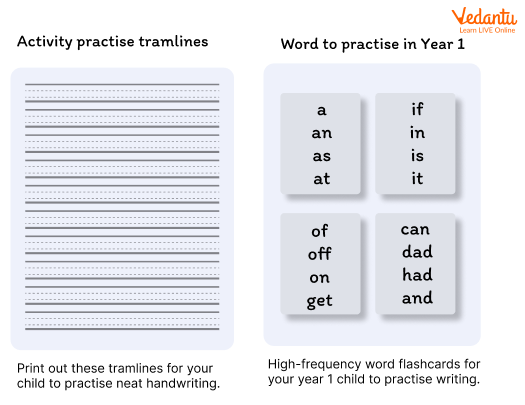




Best Fine Motor Activities to Improve Year 1 Handwriting
Your kid will learn how to use a pencil correctly, make letters and numbers, and write words in Year 1. Continue reading to learn about the National Curriculum expectations for handwriting in Year 1 and how you can help your kid at home.
Let's look at what your kids will learn from this essay, and how they can improve their handwriting by following some simple tips.
What Will Your Child Learn?
In Year 1, (age 5–6), your child will learn to:
Checking the correct seating position at a table, holding a pencil correctly and comfortably
Starting and finishing in the right place, form lowercase letters in the correct direction
Forming capital letters and digits 0–9
Understanding which letters belong to the respective handwriting ‘families’ (letters that are formed in the same ways)
Leaving spaces between the words.
How to Help Your Child Improve Handwriting at Home?
There are several ways you can help your Year 1 child with handwriting. Here are some ideas.
Practice Getting Ready to Write
Make sure your child has a chair with a straight back and a table/desk at the appropriate height for writing or doing schoolwork.
Encourage your left-handed child to hold his or her pencils far enough away from the point so that they can see what they're writing. A tripod grip is the most effective way to hold a pen or pencil for right-handed people, and it also works for left-handed people.
Instructions for the tripod grip for both left- and right-handed people can be found in the diagrams below.

Grip Representation for Right and Left Handers
Check Handwriting Style
Make sure you know what type of handwriting your child is learning at school. At this point, consistency is crucial, so avoid correcting something you believe is an error but is actually part of the style your child is learning.
Make Time to Write
Make time for your child to practise his or her handwriting. For instance, invite them to write a note on a greeting card or propose that they add words or labels to their photographs. Help them in creating a sign for their room or a useful message for another location in the house.

Activities to improve your child’s handwriting
Improving the Writing Speed of Your Child
Handwriting skills must be developed during the early school years, and they have lots of advantages. Though tough, teaching a child to write faster should begin with a good attitude. Because writing is a process, your child will develop the ability to collect ideas and arrange his thoughts with continued training and practise. Your youngster will learn to set practical and achievable goals over time. Your child's depth of knowledge and experience will eventually show in his writing, as will the excitement of expressing stimulating ideas.
Tips to Improve Children’s Writing Speed
If your writing skill improves, your handwriting speed will improve as well. The following are some tips for increasing writing speed:

A kid, about to start writing something
Hold the Pencil in a Comfortable way
The best way to hold the pencil is the dynamic tripod grip that helps a child to write faster.
Avoid holding the Pencil Harder
While writing, a careful check ensures that your child is not gripping the pencil too tightly, which can quickly tire out his hands.

A proper way of holding the pencil
Select an Appropriate Writing Methodology
He must use his shoulder and forearm muscles while writing so that the process does not slow down, cramp, or fatigue his hand.
Use the best writing tools
He must use the highest-quality writing tool available, as this will make a significant impact in his work. To improve quality, the thickness and tip size of the implement should be suitable to his preferences.
Examine their Writing Style
Your child's writing speed can be improved by changing and simplifying the way he writes letters. He will be able to write faster if the letters are the correct size.

A kid, writing in a notebook
Improving your handwriting speed might have a lot of advantages. Maintaining proper posture, using a good implement, and writing in the proper style are just a few of the important things to work on.
Conclusion
Slow writing is a big obstacle on a child's path to success. Exams, tasks, and taking handwritten notes all require a lot of writing. If they are unable to keep up, children become upset and lose interest in learning. As a result, the child's writing speed should be checked from the beginning. Only until a child can correctly form the letters does his or her writing develop. It is critical for all parents to understand how to get their children to write faster.
FAQs on Year 1 Handwriting: Simple Ways for Kids to Write Clearly
1. How to help children's handwriting by practicing at home?
A few of the techniques to help children to improve handwriting include:
Increase the size of the letters. Usually, by this age, children have mastered the mechanics of writing.
Play a different kind of spy game...
Worksheets for handwriting practice are available.
Purchase a unique pen or pencil for them.
Dot-to-dot puzzles are a fun way to spend time.
2. Why are some of the kids' handwriting skills so slow?
The more you encourage your child to write, the better he/she will become. Slow writing can be caused by a variety of factors, including poor paper positioning, incorrect posture, incorrect pencil grip, and so on.















